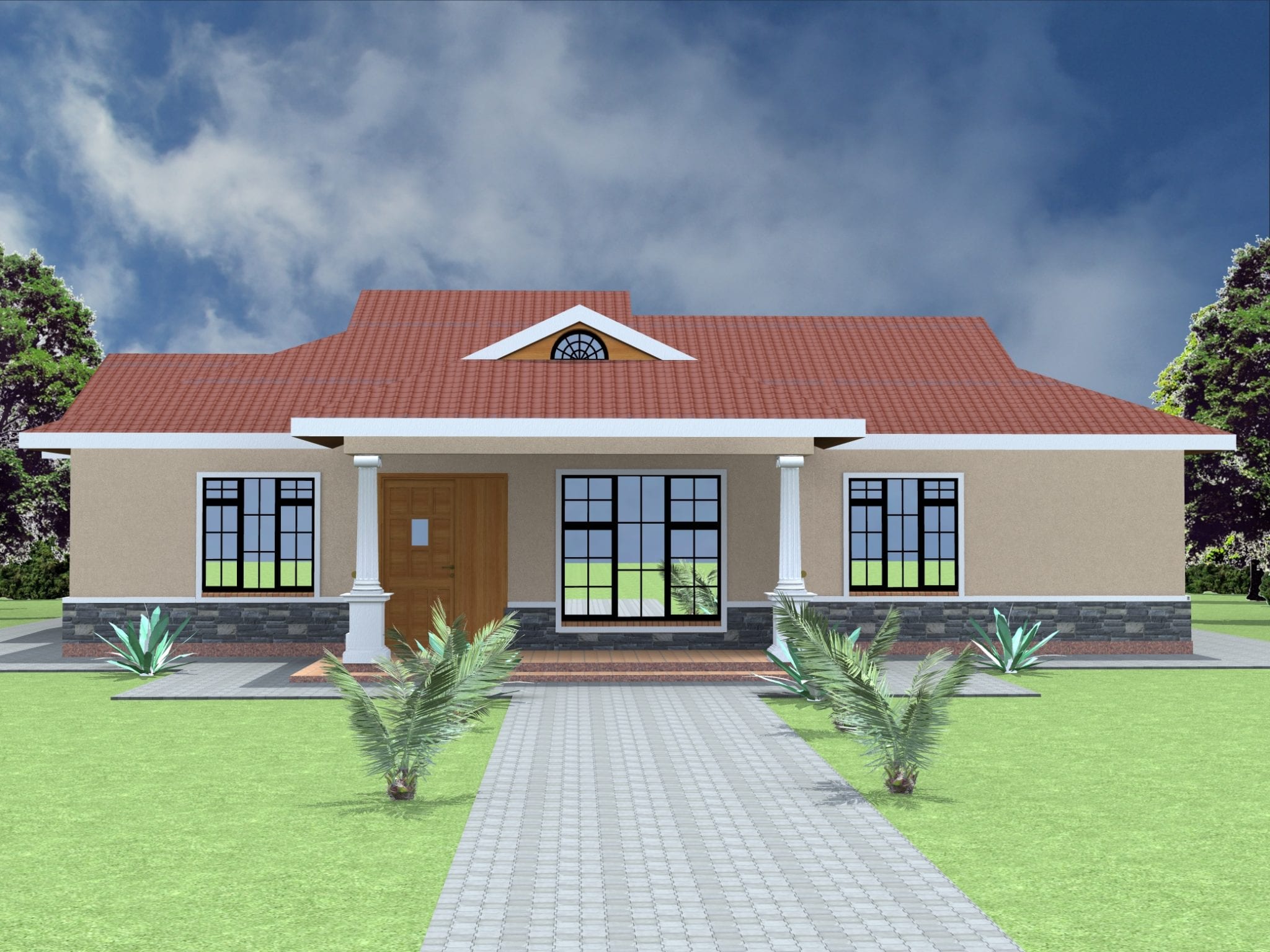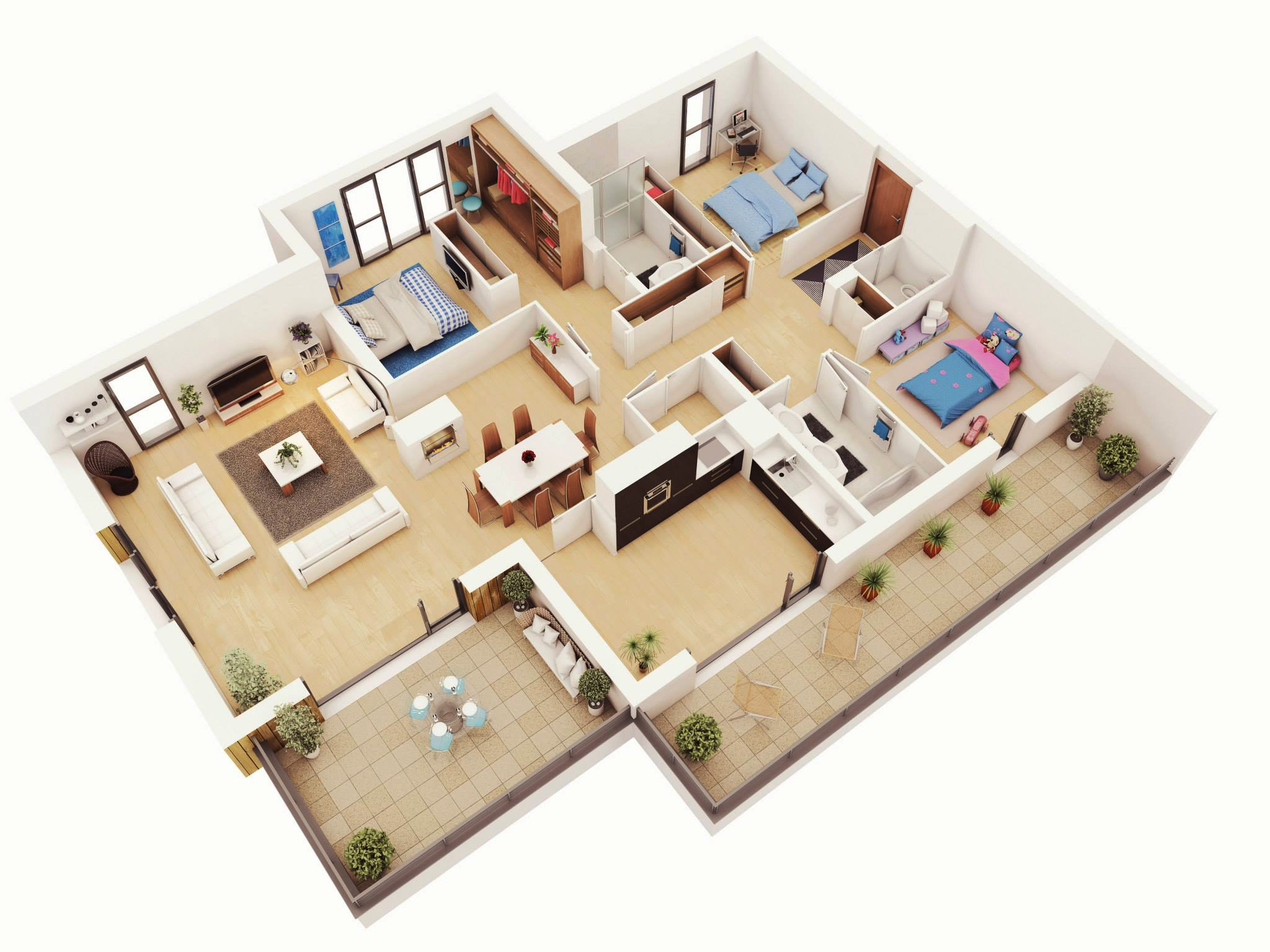The Appeal of Tiny Three-Bedroom Houses

The allure of tiny three-bedroom houses lies in their ability to provide comfortable living spaces within a compact footprint. These homes offer a unique blend of affordability, sustainability, and minimalist living, attracting individuals and families seeking alternative housing solutions.
Reasons for Choosing Tiny Three-Bedroom Houses
The decision to embrace a tiny three-bedroom house is driven by a multitude of factors, each contributing to its appeal.
- Financial Savings: Tiny homes are generally less expensive to build and purchase than traditional houses, making them an attractive option for budget-conscious individuals. The smaller footprint translates to lower construction costs, reduced property taxes, and potentially lower utility bills.
- Minimalist Lifestyle: Living in a tiny three-bedroom house encourages a minimalist lifestyle, forcing residents to prioritize possessions and focus on what truly matters. This can lead to a sense of decluttering and a more intentional approach to consumption.
- Sustainability: Tiny homes are often built with sustainable materials and energy-efficient features, reducing their environmental impact. The smaller footprint minimizes the use of resources, and the integration of renewable energy sources can further enhance sustainability.
- Flexibility and Mobility: Tiny homes can be easily transported, allowing for greater flexibility in location and lifestyle. This is particularly appealing to individuals seeking a nomadic lifestyle or the ability to relocate frequently.
Comparison with Larger Homes
Living in a tiny three-bedroom house presents a distinct lifestyle compared to residing in a larger home.
- Cost: As mentioned earlier, tiny homes are generally more affordable than larger homes, both in terms of initial purchase and ongoing expenses. This cost-effectiveness can free up financial resources for other priorities, such as travel, education, or investments.
- Space: The limited space in a tiny three-bedroom house necessitates a more intentional approach to organization and storage. It encourages residents to prioritize their belongings and maximize the use of available space.
- Environmental Impact: The smaller footprint of tiny homes reduces the environmental impact associated with construction, resource consumption, and energy usage. This aligns with the growing concern for sustainable living and reducing our carbon footprint.
Types of Tiny Three-Bedroom Houses
Tiny three-bedroom houses come in a variety of designs and layouts, catering to different preferences and needs.
- Traditional Tiny Houses: These homes often feature a classic A-frame or gable roof design, with a focus on maximizing vertical space. They typically include a small living area, a compact kitchen, a bathroom, and three bedrooms, often with bunk beds or Murphy beds to optimize space.
- Modern Tiny Houses: Modern tiny houses embrace contemporary design principles, incorporating clean lines, minimalist aesthetics, and innovative space-saving features. They may feature open floor plans, built-in storage solutions, and large windows to maximize natural light.
- Off-Grid Tiny Houses: These homes are designed for self-sufficiency, incorporating solar panels, rainwater harvesting systems, and composting toilets to minimize reliance on utilities. They often prioritize energy efficiency and sustainable living practices.
Design Considerations for Tiny Three-Bedroom Houses

Designing a tiny three-bedroom house presents unique challenges and opportunities. The key is to maximize space and create a functional and comfortable living environment. This requires a thoughtful approach to design, incorporating smart storage solutions and multi-functional furniture.
Space Maximization Techniques
Maximizing space is paramount in a tiny three-bedroom house. Every inch needs to be utilized effectively to create a functional and comfortable living environment. Smart storage solutions and multi-functional furniture are essential tools for achieving this goal.
- Built-in Storage: Built-in shelves, cabinets, and drawers seamlessly integrate with the house’s design, maximizing storage space without sacrificing floor area. For example, built-in shelves along the staircase can provide storage for books, decorative items, or other necessities.
- Multi-functional Furniture: Investing in furniture that serves multiple purposes is crucial. A sofa bed can function as both a seating area and a sleeping space, while a dining table with built-in storage can provide both a dining area and a place to store kitchenware.
- Vertical Space Utilization: Utilizing vertical space is another effective strategy for maximizing space. Tall cabinets and bookshelves can store items efficiently, freeing up valuable floor space. A loft bed with storage space underneath can also create a sleeping area while maximizing floor space.
Floor Plan Design, Tiny three bedroom house
The floor plan of a tiny three-bedroom house is crucial for maximizing space and creating a functional layout. Here’s a potential floor plan incorporating the design principles mentioned above:
- Open Floor Plan: An open floor plan eliminates walls, creating a sense of spaciousness and allowing for natural light to flow throughout the house. This can be achieved by combining the living room, dining area, and kitchen into a single space.
- Built-in Shelves: Built-in shelves can be incorporated into the design, providing ample storage space without taking up valuable floor area. These shelves can be placed in the living room, kitchen, or bedrooms, offering a convenient way to organize books, dishes, or clothes.
- Vertical Space Utilization: Utilizing vertical space is essential in a tiny house. A loft bed can be placed in one of the bedrooms, creating a sleeping area and leaving the floor space for other activities.
Third Bedroom Considerations
Incorporating a third bedroom into a tiny house design presents unique challenges. Maintaining privacy and functionality within a limited space requires careful planning.
- Privacy: Privacy is essential in a multi-bedroom house. Consider using sliding doors or room dividers to create separate spaces within the bedrooms. A small, dedicated office space can be created within the living room or kitchen, allowing for a quiet work area.
- Functionality: The third bedroom should be designed to serve its intended purpose. If it’s intended for children, consider incorporating bunk beds or built-in storage solutions. For a guest room, a pull-out bed or a futon can be used to maximize space.
Building and Living in a Tiny Three-Bedroom House: Tiny Three Bedroom House

Embracing the tiny house movement for a three-bedroom dwelling presents a unique blend of practicality and design challenges. Building or purchasing a tiny three-bedroom house requires careful planning, resourcefulness, and a commitment to a minimalist lifestyle.
Building a Tiny Three-Bedroom House
The process of building a tiny three-bedroom house involves several key steps, each with its own set of considerations.
Budgeting and Financing
Creating a realistic budget is essential for a successful tiny house project.
- Land Costs: If you plan to build on your own land, factor in the purchase price and any necessary site preparation.
- Construction Costs: Tiny houses can be built using various materials, with costs varying accordingly. Consider the cost of lumber, insulation, roofing, windows, and doors.
- Labor Costs: You can save money by doing some of the work yourself, but hiring professionals for specialized tasks like plumbing and electrical work will be necessary.
- Permits and Inspections: Obtain the necessary permits and comply with local building codes. These costs can vary depending on your location and the complexity of your project.
Design and Construction
Designing a functional and comfortable tiny three-bedroom house requires careful planning and space optimization.
- Floor Plan: A well-designed floor plan maximizes space utilization, ensuring efficient flow and ample storage.
- Multi-Functional Furniture: Utilize furniture that serves multiple purposes, such as a sofa bed or a dining table that converts into a desk.
- Vertical Space: Maximize vertical space with built-in shelves, cabinets, and lofts.
- Construction Techniques: Consider using lightweight and durable materials like SIPs (structural insulated panels) or prefabricated components to streamline construction.
Finding a Tiny House Builder
If you choose not to build your tiny house yourself, finding a reputable builder is crucial.
- Research and Referrals: Research builders specializing in tiny houses and ask for recommendations from other tiny house owners.
- Contracts and Agreements: Ensure clear and detailed contracts outlining the scope of work, materials, timelines, and payment terms.
- Communication and Transparency: Maintain open communication with your builder throughout the process to address any concerns or changes.
Living in a Tiny Three-Bedroom House
Living in a tiny three-bedroom house requires embracing a minimalist lifestyle and adapting to a smaller living space.
Daily Routines and Organization
Creating and maintaining a consistent daily routine helps optimize space and time in a tiny house.
- Decluttering and Minimalism: Regularly declutter and minimize possessions to keep the house tidy and organized.
- Designated Spaces: Create designated spaces for specific activities, such as a dedicated workspace or a cozy reading nook.
- Vertical Storage: Utilize vertical space for storage, such as shelves, cabinets, and hanging organizers.
- Multi-Purpose Furniture: Invest in furniture that serves multiple functions, such as a sofa bed or a dining table that doubles as a desk.
Community Involvement
Living in a tiny house often fosters a sense of community and shared values.
- Tiny House Communities: Consider joining a tiny house community to connect with like-minded individuals and share experiences.
- Local Events and Gatherings: Attend local tiny house events and gatherings to learn from others and build relationships.
- Sharing Resources: Explore opportunities to share resources with other tiny house owners, such as tools, equipment, or parking spaces.
Essential Items for a Tiny Three-Bedroom House
Creating a checklist of essential items for a tiny three-bedroom house ensures that you have the necessary furnishings and appliances to create a comfortable and functional living space.
Functionality and Durability
- Durable and Multi-Functional Furniture: Invest in high-quality furniture that is durable, comfortable, and serves multiple purposes.
- Space-Saving Appliances: Choose appliances that are compact and efficient, such as a mini-fridge, a microwave oven, and a compact dishwasher.
- Efficient Lighting: Utilize energy-efficient LED lights to save energy and brighten up the space.
- Versatile Storage Solutions: Maximize storage space with shelves, cabinets, drawers, and under-bed storage.
Space-Saving Design
- Foldable or Convertible Furniture: Consider furniture that folds or converts to save space, such as a sofa bed or a Murphy bed.
- Wall-Mounted Storage: Maximize wall space with shelves, hooks, and organizers for hanging clothes, towels, and other items.
- Compact Kitchen Appliances: Choose compact kitchen appliances like a mini-fridge, a microwave oven, and a compact dishwasher.
- Vertical Storage: Utilize vertical space for storage, such as shelves, cabinets, and hanging organizers.
